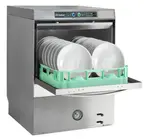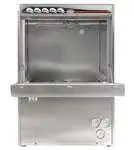
How to Load a Dishwasher: A Comprehensive Guide
Loading a dishwasher correctly ensures your dishes come out sparkling clean and can extend the life of your appliance. Here’s a detailed guide on how to load a dishwasher, using best practices for different types of dishes and utensils. Following these steps will not only improve the cleanliness of your dishes but also enhance the efficiency of your dishwasher. Let's dive into the specifics of loading a dishwasher correctly. By following these guidelines, you can minimize the time and effort spent on re-washing dishes. Additionally, proper loading techniques can help you conserve water and energy, making your dishwashing routine more environmentally friendly.
The Basics of Loading a Dishwasher
Preparation is Key
Before loading the dishwasher, scrape off any large food particles. While it’s not necessary to pre-rinse dishes thanks to modern dishwashers’ capabilities, removing chunks of food helps prevent clogs and ensures a more effective wash. Additionally, it’s wise to inspect for and remove any bones or other hard items that could cause blockages or damage. This simple step can make a significant difference in the performance of your dishwasher. Taking a moment to prepare your dishes properly can also prevent unpleasant odors and ensure a more hygienic kitchen environment.
Bottom Rack: The Power Zone
The bottom rack is designed for larger and more durable items. Here's how to load the dishwasher's bottom rack:
- Plates: Place plates upright and facing the center. This arrangement allows water to reach all surfaces effectively. Ensure that plates are evenly spaced and not overlapping to avoid any areas being missed by the spray. For larger plates, use the slots furthest from the center to ensure they fit properly without obstructing the spray arms. Properly loaded plates will dry more efficiently, reducing the need for manual drying afterward.
- Pots and Pans: These should be placed at an angle to ensure water can reach inside. Avoid stacking them to allow proper water flow. If you have particularly large pots, it might be best to wash them separately to avoid overcrowding. For stubborn stains, consider soaking pots and pans before placing them in the dishwasher. Remember that some pots and pans may have special washing instructions, so always check the manufacturer's recommendations.
- Bowls: For how to load bowls in the dishwasher, place them at an angle, also facing the center. Avoid overlapping them too much, as this can obstruct water and detergent flow. Ensure that each bowl is securely placed to prevent it from tipping over during the wash cycle. Mixing larger and smaller bowls can help optimize space usage. Proper placement of bowls will also help in achieving better drying results, saving you time when unloading.
Top Rack: Delicate and Small Items

The top rack is suitable for glasses, cups, small bowls, and dishwasher-safe plastic items.
- Glasses and Cups: Position these between the tines, facing downward. This prevents them from filling with water. Ensure that glasses are not touching each other to prevent chipping. If you have wine glasses or other delicate items, check if your dishwasher has a dedicated holder or rack for them. This positioning also helps in reducing water spots, giving your glassware a cleaner finish.
- Small Bowls: For how to place dishes in the dishwasher's top rack, angle small bowls to ensure they are thoroughly cleaned. Placing them between larger items can help keep them stable during the wash. Small bowls should be evenly distributed to balance the rack and maximize cleaning efficiency. Using the top rack efficiently can also help in preventing potential damage to delicate items during the wash cycle.
- Dishwasher-Safe Plastics: Place these on the top rack to avoid melting or warping due to the heating element usually located at the bottom. Make sure plastic items are securely positioned to avoid flipping over. Avoid placing very lightweight plastic items on the edges, as they can be dislodged easily by the water jets. Ensuring plastic items are properly secured can prevent them from moving around and potentially getting damaged.
Utensil Basket: The Right Mix

Knowing how to load utensils can prevent nesting and ensure each piece gets clean.
- Forks and Spoons: Place forks and spoons with handles down to avoid nesting. Mix them up to prevent them from sticking together. Alternating directions can further reduce the risk of nesting and improve cleaning. For best results, avoid overcrowding the utensil basket. Proper utensil placement can also help in reducing the drying time, making them ready to use straight out of the dishwasher.
- Knives: Load knives with handles up to avoid injury when unloading. For safety, consider placing sharp knives separately and washing them by hand. If you do place knives in the dishwasher, ensure the blades are not pointing upwards to prevent accidents. Also, keep in mind that high-quality knives can be damaged over time by dishwasher cycles. Proper care of knives will not only keep them sharp longer but also ensure your safety during unloading.
The Proper Way to Load a Dishwasher: Tips and Tricks
Avoid Overloading
One of the most crucial aspects of loading a dishwasher is not to overload it. Overcrowding can prevent dishes from being properly cleaned and can damage the appliance over time. Ensuring each item has enough space will allow water and detergent to reach all surfaces. Regularly checking and maintaining your dishwasher can help identify and address any issues caused by overloading. By avoiding overloading, you can also prevent items from knocking into each other, which can lead to breakages.
Use the Correct Detergent
Always use detergent specifically designed for dishwashers. Other types can create excess suds and damage the machine. Liquid, powder, and pod detergents are all options, but make sure to use the correct amount as indicated on the packaging. Using too much detergent can lead to residue build-up, while using too little can result in ineffective cleaning. Choosing the right detergent can enhance the performance of your dishwasher, ensuring dishes come out spotless.
Utilize Dishwasher Features
Modern dishwashers come with features like adjustable racks and specialized cycles. Familiarize yourself with these to optimize the cleaning process. These features can be particularly useful for accommodating different sizes and types of dishes. Take advantage of eco-friendly and quick wash cycles to save energy and time when appropriate. Understanding and utilizing these features can help you achieve the best results while conserving resources.
Loading Dishwasher Efficiently
Place larger items at the sides and back to prevent blocking the spray arms. Ensure that all items are securely placed so they won’t be knocked over by the water jets. Double-check that no items are protruding or hanging out of the racks, as this can interfere with the door seal. For best results, experiment with different loading configurations to see what works best for your specific dishwasher model. Efficient loading practices can significantly improve the cleanliness of your dishes and the lifespan of your appliance.
How to Fill a Dishwasher: Common Mistakes to Avoid

Blocking the Spray Arms
Ensure nothing obstructs the spray arms from spinning freely. This can hinder water distribution and leave dishes dirty. Regularly check the spray arms for debris and clean them as needed to maintain optimal performance. A simple way to test for blockages is to manually spin the spray arms before starting a cycle. By keeping the spray arms clear, you can ensure a thorough and even wash every time.
Incorrect Placement of Large Items
Avoid placing large items, such as baking sheets or cutting boards, at the front or center, as they can block detergent dispensers and the water spray. Position them at an angle or on the sides to allow proper water flow. If you find that large items are consistently blocking water spray, consider washing them by hand or in a separate cycle. Proper placement of large items ensures all dishes receive adequate cleaning and prevents potential damage to your dishwasher.
Ignoring the Filter
Clean the dishwasher filter regularly. A clogged filter can reduce cleaning efficiency and cause odors. Most filters can be easily removed and rinsed under running water. Keeping the filter clean will help maintain the dishwasher's performance and prevent unpleasant smells from developing. Regular maintenance of the filter can also extend the lifespan of your dishwasher, saving you money on repairs.
Final Thoughts on Loading a Dishwasher
Mastering how to load a dishwasher properly can save you time and effort, ensuring your dishes come out clean and your machine runs smoothly for years to come. Follow these guidelines for the best way to load a dishwasher, and enjoy sparkling clean dishes with every wash. Consistency in following these tips will lead to better results and extend the lifespan of your dishwasher.




